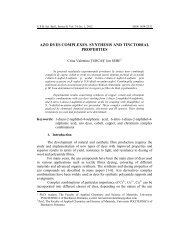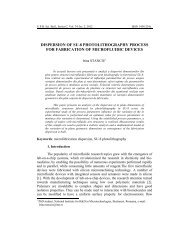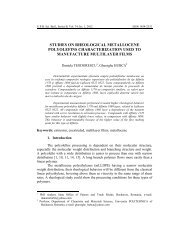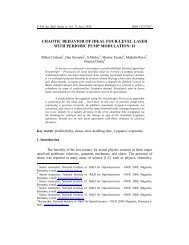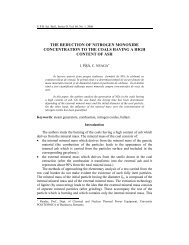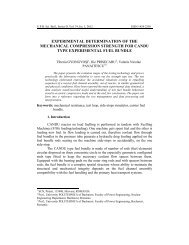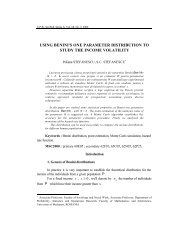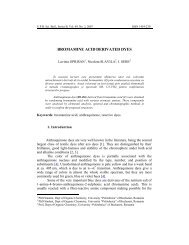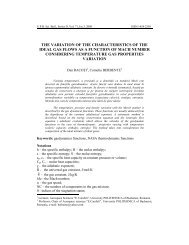research on silting and desilting of reservoirs - Scientific Bulletin
research on silting and desilting of reservoirs - Scientific Bulletin
research on silting and desilting of reservoirs - Scientific Bulletin
Create successful ePaper yourself
Turn your PDF publications into a flip-book with our unique Google optimized e-Paper software.
Research <strong>on</strong> <strong>silting</strong> <strong>and</strong> de<strong>silting</strong> <strong>of</strong> <strong>reservoirs</strong> (artificial lakes) 193<br />
Fig. 3. Sediment transport modeling for Zig<strong>on</strong>eni lake clogging forecasting.<br />
The sediment transport <strong>on</strong> the two rivers is realized starting from the<br />
grading curves <strong>of</strong> the transported material being in suspensi<strong>on</strong>. Regarding the<br />
transport <strong>of</strong> suspended solid particles, these are distributed throughout the mass<br />
current, their keeping in suspensi<strong>on</strong> being achieved by the effect <strong>of</strong> the turbulent<br />
velocity pulsati<strong>on</strong>s.<br />
In general, fine particles which are small comp<strong>on</strong>ents <strong>of</strong> the riverbed are<br />
carried in suspensi<strong>on</strong>. Therefore, the solid suspensi<strong>on</strong> flow depends <strong>on</strong> the<br />
available flow from the water current rather than <strong>on</strong> the transport capacity <strong>of</strong> the<br />
liquid current. In most cases this transport is unsaturated.<br />
Obtaining formulas for suspended solid flow calculati<strong>on</strong> requires<br />
knowledge <strong>of</strong> both speed <strong>and</strong> c<strong>on</strong>centrati<strong>on</strong>. Regarding the vertical distributi<strong>on</strong> <strong>of</strong><br />
c<strong>on</strong>centrati<strong>on</strong> there are menti<strong>on</strong>ed the following theories: the theory <strong>of</strong> turbulent<br />
diffusi<strong>on</strong>, the energetic theory <strong>and</strong> the gravitati<strong>on</strong>al theory[7].<br />
The sediment transport calibrati<strong>on</strong> will be based <strong>on</strong> measured data<br />
regarding the clogged volume <strong>of</strong> Zig<strong>on</strong>eni Lake. Once calibrated <strong>and</strong> validated<br />
this model can be then applied to forecast future volumes <strong>of</strong> transported sediment<br />
material which will be deposited in the lake<br />
Using this calculati<strong>on</strong> model provides (in c<strong>on</strong>diti<strong>on</strong>s <strong>of</strong> the calculati<strong>on</strong><br />
model calibrati<strong>on</strong>) the forecasting <strong>of</strong> the alluvial material quantity transported <strong>and</strong><br />
deposited in the lake.<br />
5. C<strong>on</strong>clusi<strong>on</strong>s<br />
The sediment transport modeling is a difficult process because the data<br />
used to forecast this transport <strong>and</strong> riverbed changes are extremely sensitive to a<br />
wide range <strong>of</strong> physical parameters. However, <strong>on</strong>ce calibrated, a forecasting model<br />
<strong>of</strong> sediment transport can provide <strong>on</strong> a l<strong>on</strong>g-term the regi<strong>on</strong>al trends <strong>and</strong> it can be<br />
used as a decisi<strong>on</strong> <strong>and</strong> planning tool.<br />
This model will be applied in a report <strong>of</strong> a doctoral thesis regarding the<br />
reproducti<strong>on</strong> <strong>and</strong> forecasting <strong>of</strong> the clogging phenomen<strong>on</strong> <strong>of</strong> an artificial lake.



